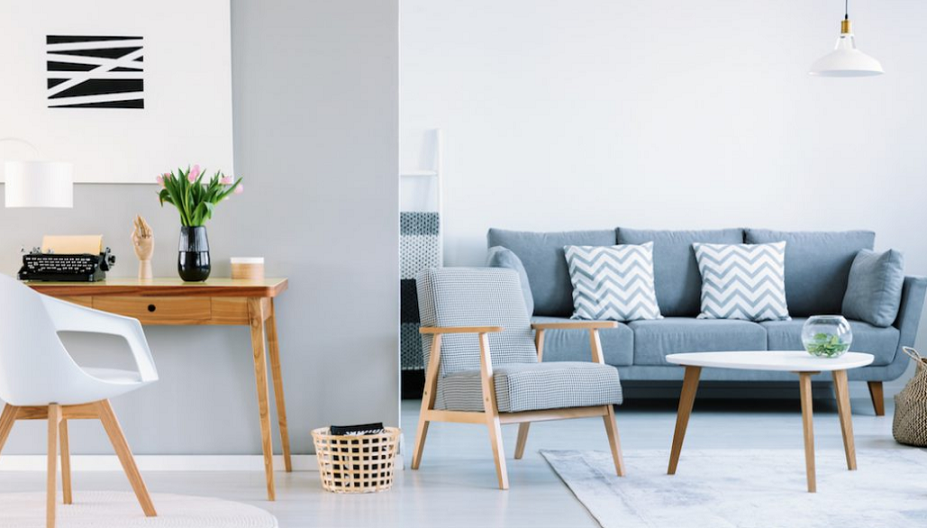It’s no secret that interior design can be expensive to incorporate into your home budget. Even if you’re only looking at redecorating a single room, the costs can add up quickly. Do you want to buy carpeting or install hardwood to cover the floors? What paint colour will you choose? How much of it will you need to cover the space? Are you going to buy new furniture? What about new light fixtures and other accessories? Don’t forget about wall hangings and décor.
The idea of having to purchase all these items is overwhelming. When trying to do it all on a limited budget, it seems insurmountable, right? Not once you’ve learned our secrets.
Here are the 10 Most Important Tips For Decorating On A Tight Budget. Use them to create an interior design that’s fit for your dream home, without the designer prices to match.
1. Plan Before You Begin

While proper planning is essential for any home improvement project, its necessity increases tenfold when you’re working on a tight budget. After all, no one wants to find themselves in a situation where they’ve found the perfect couch only to discover that they don’t have enough money in their account or that the non-refundable corner cabinet they’ve ordered online won’t fit into the space. Doing a little legwork beforehand will drastically cut down on the likelihood of encountering an unpleasant surprise along the way.
First, find your design inspiration. Look at magazines and the internet to figure out what style you’d like to emulate in your design. Then, break the project down into its components – flooring, furniture, paint, accessories, and décor. Browse stores to get a solid idea on how much the components will cost. Be sure to take into account any associated costs like hiring handymen.
Once you have a price point in mind, take a look at your finances. Be honest about how much you have available for spending. If that amount falls short of your project price point, set aside a manageable amount of money each week until you reach your goal. It may take longer than charging purchases on a credit card, but you’ll thank yourself later.
2. Repurpose What You Already Have
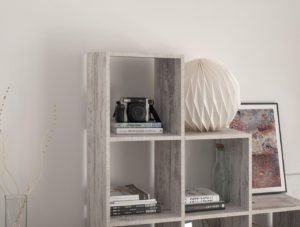
There’s no denying that repurposing your old design elements won’t be as exciting as waiting for all new pieces to arrive from the store. But, with a little bit of elbow grease and an investment in free time, it’s possible to totally transform the look of almost any component of your interior design. Plus, it will allow you to save money for must-have purchases later on.
Look around your existing space and think of out-side the box ways to repurpose items that you’re currently using. Do you really need all new kitchen cabinets or can you just get them refaced? Are there hardwood floors underneath the current carpeting? Can you freshen up your old bedroom suit by giving it a new coat of paint?
As you begin to get a feel for what you can repurpose, do your research. Chances are that you’ll be able to find DIY guides for most of the projects. Be sure to study the guides thoroughly before starting a project and continue to consult it as you go. Ask a handy friend or family member to provide guidance, if possible.
3. Anchor The Room With Furniture
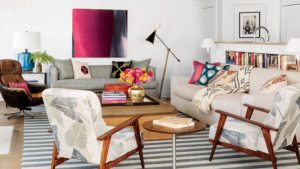
Working under a budget is often about prioritizing spending. When you’re working with limited resources, you have to spend money where you will get the most bang for your buck. In interior design, that means allocating a large portion of your budget towards purchasing quality furniture.
Furniture is a wise place to spend your money because it will likely last for years and it also serves the dual purpose defining a room with just a glance. Unlike paint colour that will fall out of style or accessories that will lose their lustre after a few years of wear in tear good furniture could last for decades.
4. Buy Furniture Without Varnishes or Stains
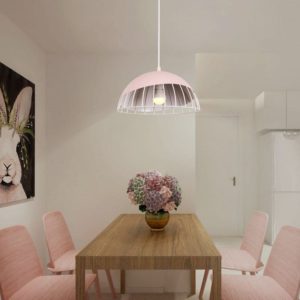
Though you want to invest in good furniture, you can save if you buy pieces that are unfinished, or lack a top coating of paint or stain. Even though these costs less than the models that you could buy off the showroom floor, you’ll often get better quality pieces since the manufacture is unable to hide imperfections under varnishes and paint.
I would recommend asking the manufacturer plenty of questions before starting a finishing project. Ask them which kinds of stains the wood will take well and which it won’t, what colour or shade they would recommend, and if you can have an extra piece of wood to take come in order to create a sample.
Once you have your vision in mind, get the technique down. Make sure to sand the wood before starting and in between coats. Apply the finish horizontally whenever possible, in even strokes along the grain of the wood, and always leave plenty of time for the coating to dry.
5. Shop Second Hand
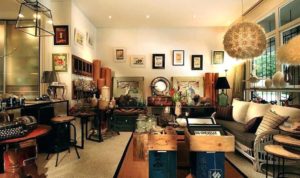
Finishing your own wood is nice in theory, but sometimes it’s just not feasible. You could be trying to decorate a tiny apartment where there isn’t enough space for such work or you could have a hectic schedule filled with work, family obligations, and social engagements. Whatever the case, if you need to stay on budget while buying ready-made furniture, don’t be afraid to shop second hand.
Get to know your local thrift store. Figure out what days they accept new inventory and get there early to scope out every inch of the place. Shop online for auctions or freecycle ventures. Spend your weekends combing yard sales and flea markets. Ask around to see if your family and friends have anything that they’re not using. Keep an eye out for going-out-of-business sales and pay special attention to the curbs of your neighbourhood on your local trash day.
When shopping for second hand items, quality is more important than style, which can always be altered. Inspect every inch of the piece for structural quality. You can always cover a sofa with a slip cover, give a rusted mirror a new coat of paint, or buy a different lamp shade to help your find fit better with your interior design.
6. Go Bold With Colour
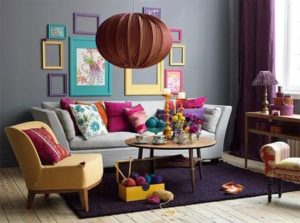
It’s time to let you in on one of interior design’s biggest secrets: Colour is cheap in contrast to other interior design elements. Accessories like throw pillows cost even less. Infuse a high-end look into your space by using filling it with colour.
Before you take the plunge with paint, be sure you’ve picked a colour you love. Pick up a few free palettes from your local hardware shops or DIY shops. Once you’ve narrowed it down to a few choices, you can pick up samples of each. Paint small squares of each sample colour on each wall of the room see which one you like best. Check on the samples over the course of a few days to see how the colours react to varying amounts of daylight.
A note on choosing colours: The folks at recommend using the 60-30-10 Rule when selecting shades for your interior. It states that roughly 60% – think walls – of the space should be filled by a dominant, more neutral colour. Then, the next 30% of the space should go to a secondary colour. The final 10% should be decorated in a bolder accent colour.
7. DIY Your Décor
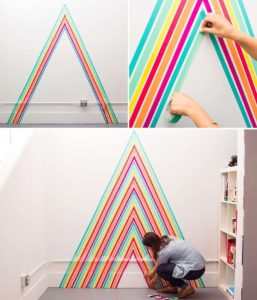
In interior design, the term “decor” typically refers to the items in a room that have no specific function other than to decorate the space. These can be things such as artwork or other wall hangings, decorative rugs, and coffee table assortments. While they are indeed essential to a cohesive design, these items are also the place where you can save the most money.
Decor is incredibly open to personal interpretation, so use skills that you already have to create your own items rather than buying them. If you are always behind a camera, frame a few of your favourite pictures and proudly put them on display. Completing a painting or two to use as wall art is an excellent excuse to rediscover a beloved past time. If you feel at home by the sea, collect some shells to give your room a relaxing feel.
Don’t be afraid to search out items that can serve a dual purpose. Show off your vast book collection by artfully arranging them on an open bookcase. Use old wine bottles in lieu of vases for fresh flowers. Anything will work as long as you let your personality shine through.
8. Cultivate A Minimalist Design Style
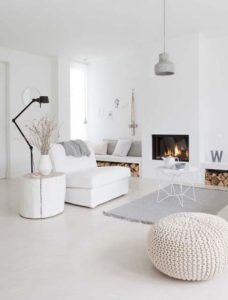
It’s right in the name. Choosing a minimalist style to decorate your interior will cost you minimally, at least when compared to other, more ornate, schools of thought. Plus, minimalist design is in right now, so not only will you be saving money, you’ll also be staying on trend.
In interior design, minimalism is defined by neutral colours, especially monochromatic ones, the use of natural materials, clean lines on furniture and cabinetry. Lighting should be unobtrusive, yet plentiful Be sure to use very few accessories and, when choosing items to decorate the space, opt for one or two large statement pieces rather than a bunch of knick-knacks.
Keep in mind that the ability to keep the space clean is an important component of pulling off a minimalist style. Be sure to invest in plenty of concealed storage and to straighten up regularly. While this may not be a style that appeals to everyone, if you can pull it off, it’s an easy way to keep costs down without looking like you did it intentionally.
9. Don’t Decorate Everything at Once
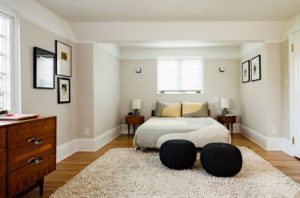
One of the biggest interior design mistakes you can make, especially when trying to save money, is to take on too many redesigning projects at once. New homeowners in particular tend to fall into the trap of wanting to redo the décor of every room from top to bottom. While it may be tempting to be able to feel like you’ve completely finished decorating, you wallet will appreciate if you go at a slower pace.
The best advice we can give is to live in a space before making any massive changes to the interior. As you begin to use the room, you will get a better feel for its quirks. Replacing old kitchen cabinets the minute you move in will seem like a waste if, six months later, you find yourself wishing you had taken the time to redesign the layout first.
Again, this is all about prioritizing. Pick the room in your home that needs the most help and start there. In the meantime, make the others liveable, even if they’re not picture-perfect. Then, when you’ve had a little time to let your budget recuperate, move onto next big project.
10. Hire A Student Designer
All of the above tips are useful if you have a strong sense of personal style and have a cohesive idea of what you want to achieve with your interior design. But, what if you don’t have an idea of where to start? Even if you know what you want, who says you have the time? For these occasions, hiring an interior designer is key and a student designer is a great way to get the help you need while staying within your price point.
Student designers are a find because they are often looking to sharply discount their rates in exchange for experience. Some may even forgo their design costs entirely if you’d be willing to provide them with a glowing testimonial and let them take a few photos of the finished project for their portfolio. Call around to the interior design schools in your area or post an ad online.
As with anyone you would hire, make sure to interview potential designers first before agreeing to a contract. Look for designers that share your sense of style. Make your budget and compensation expectations very clear. If you would like them to take any special steps, such as thrifting décor items rather than purchasing them, mention these as soon as possible. Don’t hesitate to put you agreement in writing. However, once you find the right match, you’ll be good to go.
Trying to complete a decorating project on a shoestring budget isn’t easy. But, with a commitment of time an effort, it can be done. Use these tips to get you started. Don’t be afraid to run with them and really make your interior design your own. At the end of the day, what’s most important is that you are happy and comfortable in your current living space.

